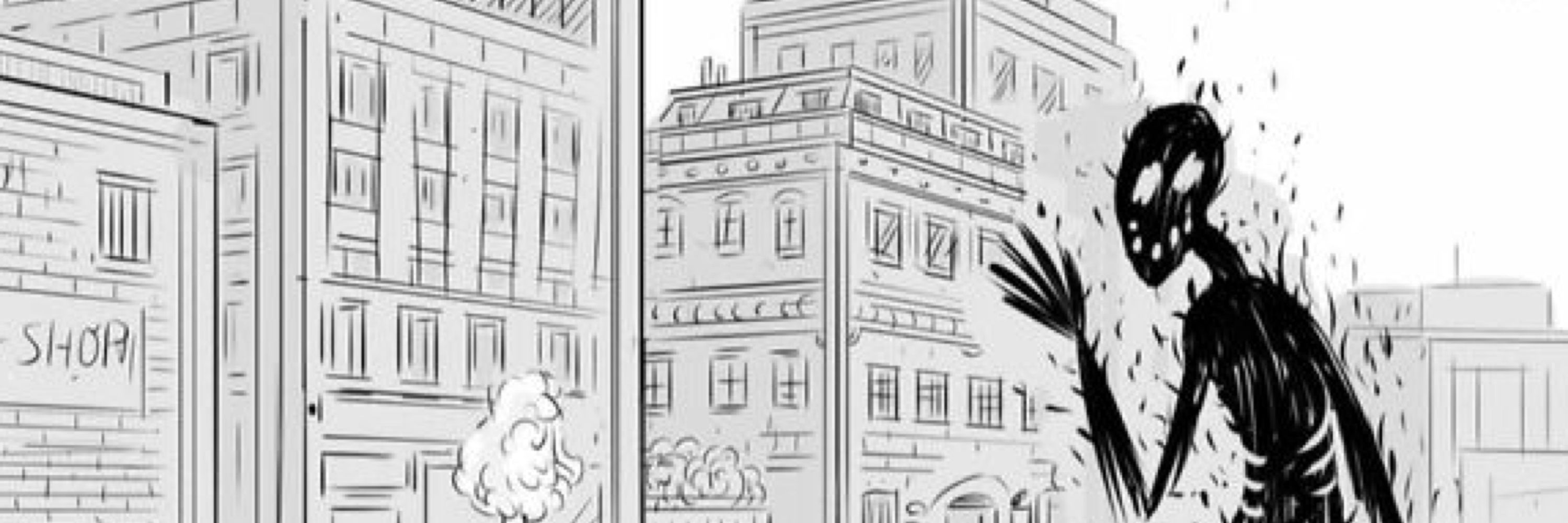- Ellis' Newsletter
- Posts
- An Essential Cartoon Ingredient.
An Essential Cartoon Ingredient.
A Rumination on Contrast.
Last week I did some industry shop-talk, this week I’m getting academic. So put on your sweater-vest and get your red pen out, because here’s my little essay on a major component of ‘tooning.
One of my favorite cartoon tropes is God. I’ve drawn him so much, unintentionally looking more and more haggard with each new drawing. I put him on a cloud, often looking at earth and/or talking with an angel. These toons have nothing to do with religious beliefs— I’m not trying to say anything about faith, nor am I interested in that. The God featured in these toons is the cartoony, westernized cliched caricature that is devoid of any actual connection to serious faith (I would hope). But I do love the trope because it sets up the ultimate contrast: the divine and the quotidian.
Before I continue, a word from our subscribe button:
Okay, here are a few cartoons about God that I sold to The New Yorker:


Here’s a quote from I only Read it For the Cartoons by Richard Gehr:
“Incongruity … signifies the inconsistency between what we expect from a situation and what is delivered.
‘That’s the way humor works for the most part,’ says Bob Mankoff.
A line nearly always misattributed to Groucho Marx sends you in one direction with
I’ve had a lovely evening
and then pulls the rug out from under you with
but this wasn’t it.”
When it comes to cartoons, incongruency often consists of the visual and verbal elements mixed together to create contrast. That first image with God holding a wine glass tells you everything you need to know about this guy. He doesn’t seem like the almighty of scripture in this toon. Instead he’s the bougie neighbor who invites you over to show off his newly renovated kitchen. God in cartoon #2 is frustrated with his earth computer program (A sub-trope I play with a lot). Being aggrieved with computers may be the most human thing in the world. Meanwhile, God #3, (drawn by Jerald Lewis) is directing that old testament vitriol towards the mundane.
My point is, these cartoons are funny (hopefully), because the Creator appears as ordinary as his creations. The godly and the fallible as one. In other words: contrast!
You look at any cartoon, you’ll find contrast. I used the God example because the contrast is so stark, as stark as it gets. That starkness can go in the other direction too, as in with this great Avi Steinberg cartoon, who imbues human anxiety onto an ant:

Sometimes it’s not even a contrast of two subjects but contrast within one. There’s this “quiet part out loud” trope, where a character just says what they are thinking, consciously or not, as with this classic cartoon from Jason Adam Katzenstein:

The contrast at play here is the language of self-awareness voiced by a character who is anything but.
I’m going to end on this: When cartoonists talk about “punching inward,” it’s usually a result of seeing contrast within themselves: the flaws they inhabit mixed with the recognition of those flaws.

This cartoon of mine, drawn in the middle of the COVID lockdown, was a recognition of my desire to be seen as an artist, or to take it further, my inability to define myself on terms unrelated to the public’s eye. I don’t love this quality about myself, but I cannot deny that it’s there.
That tension sucks, but it’s also funny.
That was long! I won’t keep you any longer. I won’t even bother asking you to subscribe again. As always, thanks so much for reading.



Reply